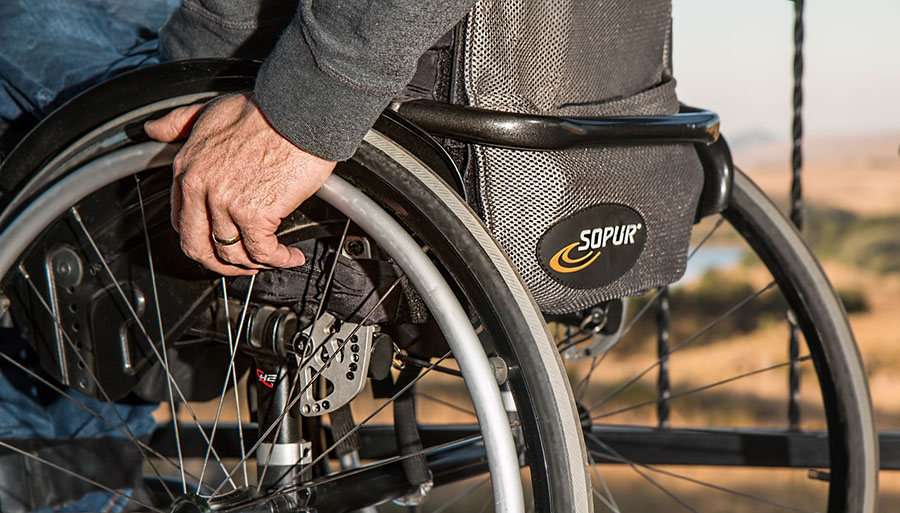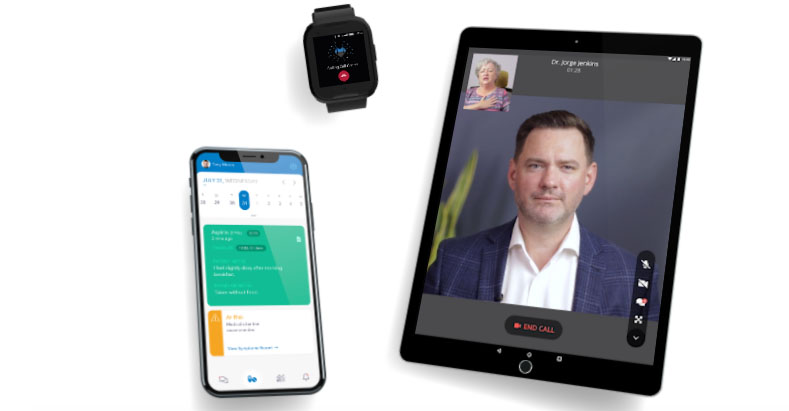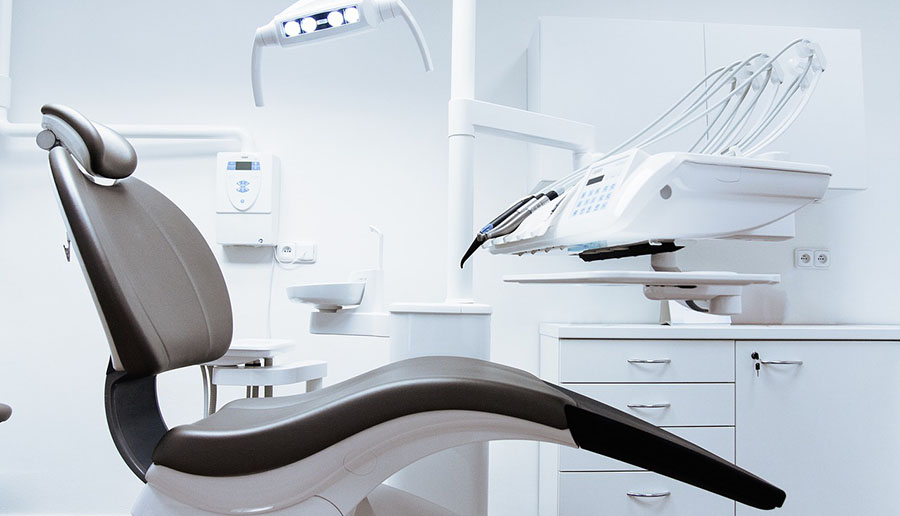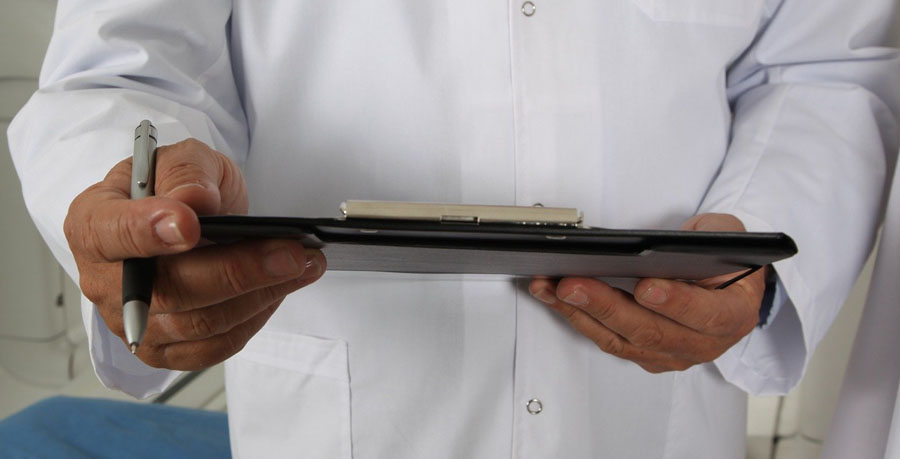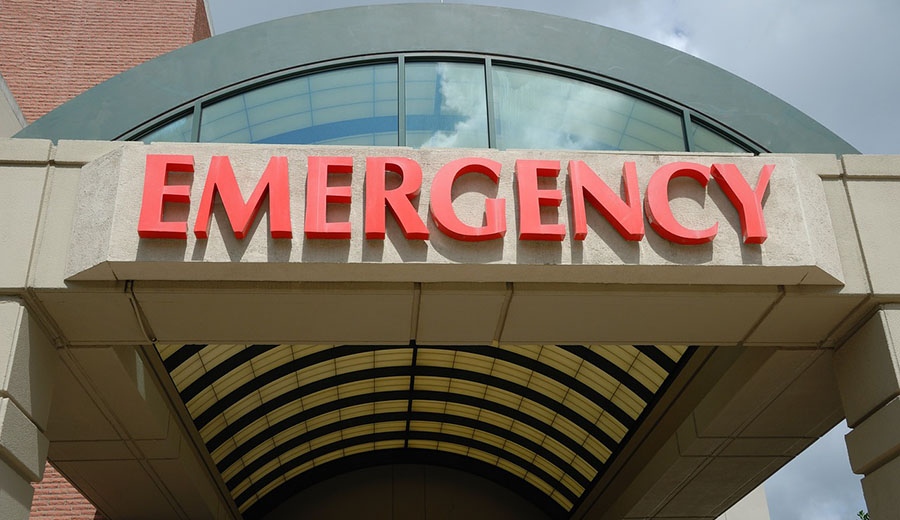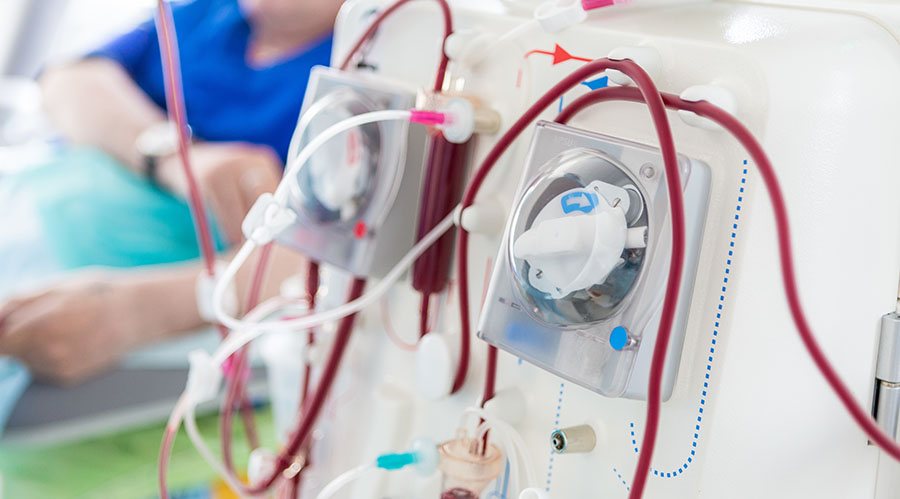The Life Sciences Report: Tell us a little bit about the financial history of Nobilis Health Corp. (NHC:TSX).
Harry Fleming: The company was originally a rollup of ambulatory surgery centers—outpatient centers. Back in 2007, when it was called Northstar Healthcare Inc., the company successfully launched a high-profile initial public offering (IPO) on the Toronto Stock Exchange for $150 million ($150M). The IPO was very large for Canada. Dr. Donald Kramer, who is now our chairman, was CEO at the time. In 2010, he got crosswise with the Northstar board of directors and bought a controlling interest to fix some structural issues. The 2010 revenues were $12M. In 2013, revenue rose to $31M. We expect to hit $83M in 2014.
Ambulatory surgery is trending strongly in the U.S. We started out in Texas and Arizona. A recent acquisition has brought Nobilis Health ambulatory surgery centers to eight different states ranging from Minnesota to Florida. We are completing our U.S. registration statement for listing on the New York Stock Exchange. There are several other "Northstar" healthcare companies on the exchange, so we rebranded as Nobilis Health.
TLSR: What is an ambulatory surgery center?
HF: It is an outpatient surgery center, as opposed to a hospital-based surgery clinic, which requires an overnight stay. The centers are typically much smaller than hospital clinics. Twenty years ago 30% of all surgeries were out-patient; today 70% are.
Our centers are very selective about the types of procedures we perform. That selection is based upon the reimbursable, or the rate of revenue, we can earn on a procedure. For example, we do bariatric cases—stomach sleeves for weight loss. We do spine and pain surgeries, and podiatry. We are slated to add several more procedures as we move through 2015.
TLSR: How many centers do you have? Are they close enough to share the regional resources?
HF: In Houston, we have four different facilities; three ambulatory surgery centers and a small hospital. In Dallas, we have two ambulatory surgery centers. In Phoenix, we have an ambulatory surgery center. We have ambulatory surgery center relationships in 11 other cities.
We are positioned for an annual growth rate of 20%. Our forecast for 2015 is $205M, with earnings before interest, taxes, depreciation and amortization (EBITDA) of about $41M. During the last four years, our growth has averaged 50% per year.
TLSR: What is the company's basic business plan going forward, including marketing and expanding into new regions?
HF: We operate our own facilities and have contracted relationships with other centers. We spend significant localized marketing dollars to acquire patients for doctors who are in our network. Our staff doctors do the surgical procedures at our centers. The doctor gets his professional fee on his own from the insurance company; we do not participate in that billing. We do receive a facility fee for each surgical case. And we control our revenues with the marketing plan: For example, we will spend heavily on marketing specific foot pain procedures to build case flow in a given region. Advertising works.
TSLR: Is marketing for outpatient services a new idea?
HF: In the past, doctors typically formed partnerships to operate ambulatory surgery centers. Each doctor would direct case flow to his or her own center. But over the years, ambulatory centers began to proliferate. Trying to control the market, doctors bought interests in other ambulatory surgery centers—which only resulted in diluting the case flow for everyone. In short, proliferation of walk-in surgery facilities destroyed the business model of relying on doctors for cash flow.
We, on the other hand, do not rely on doctors to find patients. We advertise directly to prospective patients. Success in advertising gives us the kind of sustainability and predictability for our revenues that eludes the doctor-owned centers.
TLSR: Do you monitor the quality of the outpatient treatments?
HF: Many of our 400 employees are devoted to maintaining quality of care. Nobilis is fundamentally results-oriented.
TLSR: What professional qualifications do you and other key players bring to Nobilis?
HF: I have worked for 30 years as a lawyer and businessman in securities and mergers and acquisitions (M&A). My job at Nobilis is to develop the marketing strategy, and to find acquisitions for the company. We went on an acquisition binge after I joined up two years ago.
Dr. Kramer has 20 years of experience creating startups, primarily in the outpatient space. He has bought and sold 60 or so ambulatory surgery centers. He is a rock star in the field.
Our CEO is Chris Lloyd. Lloyd was the CEO of Athas Health LLC, which we purchased in November. Athas was an online marketing company focused on laser spine procedures under North American Spine (private). We purchased Athas Health because it has a great deal of marketing expertise. Lloyd has worked as a top executive at many companies, including as an auditor at one of the Big Four accounting firms.
TLSR: What did the acquisition of Athas Health bring to Nobilis?
HF: Nobilis is on track to book more than $80M in 2015. Athas had about $40M on its pro forma for 2014, but its model was fundamentally different from that of Nobilis. It advertises, it acquires the patients, it sends them to a doctor in a facility with which it has a contractual relationship, splitting the facility fee. If Athas make $40M, the facility made $40M. By buying Athas, we are capturing most of the facility’s $40M, because 90% of Athas' business is at our ambulatory surgery centers. We did not acquire $40M in revenue in the Athas deal; we actually acquired $76M in revenue. The numbers really glow at the level of EBITDA and the bottom line.
TLSR: How does Nobilis break down expenses and revenues?
HF: Our No. 1 expense is marketing. We spend a great deal of money on advertising, whether it's our local sales team, our marketing team, our call centers, TV advertising or Google ad word-search purchases.
At the facility level, we have traditional rent and overhead, primarily staffing costs. But we focus on high-revenue cases—cases with extraordinarily high margins. For instance, on a spine case, we can get $30–$40,000 ($30–40K) in reimbursement, but our costs will be $4–5K. It is the same with bariatrics and podiatry, where the costs of $20K reimbursable can be as low as $1K. Carpal tunnel, obstetrics and gynecology, and headache treatments follow the same model—high revenues, very low costs and, again, all based upon serving a medical need that can be marketed to the general public.
TLSR: This reimbursable is only from insurance companies?
HF: We do not accept Medicare or Medicaid. All of our cases are paid by third-party insurance. About 95% of our patients are employed, with insurance through their employers.
TLSR: Why is the markup so high on the reimbursables?
HF: Spinal surgery, for example, requires advanced procedures. The equipment is extremely expensive. A robotic spine machine we just purchased cost $750K. There are extremely high capital costs for advanced surgical equipment.
TLSR: Are your capital expenditures (capex) included in your reimbursement charge?
HF: No. Capex is not figured into in the reimbursement amount. The amount we charge for a procedure differs from community to community according to formulas set up by insurance companies.
TLSR: Do you have an eye on new acquisitions?
HF: Yes. We have multiple acquisitions on our radar. Primarily, we want to build a cookie-cutter platform, where we have a small hospital and an ambulatory surgery center in each market. We have done that in Houston. We are in talks to acquire small hospitals in Dallas and Phoenix.
TLSR: How do you finance acquisitions? Debt?
HF: We have $13M in debt; $12M of that was shareholder debt from the acquisition of Athas Health in November. We are in the process of refinancing that debt. We have a very clean balance sheet. Our total cash exceeds $10M throughout our facilities. We have a large receivables account, the collection cycle is 60–90 days. The fourth quarter is typically the strongest in our line of work.
TLSR: Has the Patient Protection and Affordable Care Act impacted your revenue stream?
HF: We hope that it will impact us positively, because more people now have insurance. We do not yet have any numbers on that.
TLSR: Who are your competitors?
HF: We have no direct competitors because we offer multiple procedures through marketing, and nobody else is doing that right now. Our closet competitor, if there is one, would be Laser Spine Institute LLC (private), which sells a laser spinal procedure. It is a heavy advertiser and does quite well in Florida. The large portfolio companies—United Surgical Partners International Inc. (USPI; private), Amsurg Corp. (AMSG:NASDAQ) or Surgical Care Affiliates Inc. (SCAI:NASDAQ)—own 100 to 200 ambulatory surgery centers each. But the model is what I call old-school: As management companies, they only own about 15% of the facilities. The other owners are doctors. The large firms can only hope that the doctors will maintain case flow. There is very little possibility for growth under that model. We do not see the large firms as competitors. We have a new model—disruptive, to borrow a phrase.
TLSR: Do your advertising campaigns target potential patients directly, or do you also target doctors?
HF: We go directly to the consumer. All of our procedures are elective. We do not do emergency room procedures. We do not do brain surgery or cancer surgery. The beauty of our system is that people can elect when they want to get their back treated. They can elect when they want that nasty foot pain resolved. They can elect when they get a stomach band procedure. Our services are tailored to fit the consumer's needs. Part of the sales process, as you can imagine, is educating the consumer on the procedure. And we only work with the finest doctors in the area for each procedure.
TLSR: You mentioned that doctors are responsible for making sure they get paid.
HF: The doctor bills his or her professional fee to the insurance carrier, so we are not involved in that aspect. There are three fees for a standard case. A professional fee for the doctor. A professional fee for the anesthesiologist, who also bills separately. We only bill an insurance company for the facility charge.
TSLR: What do the doctors get from associating with Nobilis?
HF: The struggle in our industry is getting case flow. We generate flow through marketing to the consumer, but we also get it directly from doctors. Rather than offer equity positions to the doctors, our vast marketing department builds them custom marketing programs to find more patients. That makes everybody happy.
TLSR: What do you offer to investors?
HF: Nobilis is still the early stage of a creating a high-growth vehicle. We are building out a platform that can be applied in multiple cities around the country. The diversity of our revenue stream—pumped by strong reimbursement margins—makes us quite attractive, if I can say so. There is still marketing space for build out in Phoenix, Dallas, and Houston. In Texas, we are looking at expanding into San Antonio and Austin. We can move our model into 30, 40, or 50 cities throughout the country. As we scale up, the advertising spend will benefit from economies of scale. Under this scenario, we can run statewide campaigns, rather than be limited to localities. Large marketing campaigns will increase our bottom line.
TLSR: How is your stock performing?
HF: It took a couple years to get investors to understand that we are running on a different business model now, and to bring them back to Northstar—now Nobilis. In early 2013, we were at $0.10/share, and just starting our road shows to meet investor institutions. It was a bit of a hard sell at first. But we kept coming back to the same people every few months. As our new model took hold, institutional investors started to buy stock. It moved into the $1/share range, and then to the $2/share range. Due to our most recent acquisitions, Nobilis is now trading around $4/share. That tells you something about how the market sees us.
TLSR: Is share dilution an issue?
HF: We have about 60M shares out. Fully diluted, it is about 74M. We do not have any plans for a dilutive equity raise. We will do acquisitions through debt financings.
TLSR: Is Nobilis itself a candidate for M&A?
HF: One of our long-term goals is to attract one of the multibillion-dollar companies—one with a portfolio of 100 or 200 ambulatory surgery centers or hospitals. The partner would need to buy into our model. For us, the possibility of entering into an M&A is a matter of growing to the right size. If we finish 2015 at $200M-plus, we are going to be on the M&A scope.
TLSR: Which major players would be interested?
HF: There are companies like USPI, which is owned by Welsh, Carson, Anderson & Stowe, a private equity firm. There is Surgical Care Affiliates, and AmSurg. These large companies have huge portfolios, and none of them has a marketing model comparable to ours. As we prove that that our model is robust and scalable, we will become increasingly desirable.
TLSR: Thanks for your time, Harry.
 Harry Fleming, president of Nobilis Health Corp., has more than 25 years of legal and business experience in corporate finance and securities law, focusing on emerging growth companies, mergers and acquisitions, strategic business planning and turnaround execution. His background includes venture capital representation, business strategy consulting, public company representation, as well as mergers and acquisitions with high-tech firms in Houston and Boston. Additionally, he has extensive experience consolidating companies in the healthcare, energy and waste management industries. As CEO, president, CFO and general counsel for several public and private companies, Fleming has a broad base of experience dealing with turnaround and growth strategies. Having spent more than 20 years at law firms in Houston and Boston, Fleming maintains the highest rating (AV) of U.S. attorneys by Martindale-Hubbell. Fleming is admitted to practice law in Texas and Massachusetts. He is also admitted to practice before the U.S. Supreme Court. Fleming received his master's degree in business administration from Boston College in 1999, his juris doctorate from the University of Houston in 1983, and a bachelor's degree from the University of St. Thomas in 1980.
Harry Fleming, president of Nobilis Health Corp., has more than 25 years of legal and business experience in corporate finance and securities law, focusing on emerging growth companies, mergers and acquisitions, strategic business planning and turnaround execution. His background includes venture capital representation, business strategy consulting, public company representation, as well as mergers and acquisitions with high-tech firms in Houston and Boston. Additionally, he has extensive experience consolidating companies in the healthcare, energy and waste management industries. As CEO, president, CFO and general counsel for several public and private companies, Fleming has a broad base of experience dealing with turnaround and growth strategies. Having spent more than 20 years at law firms in Houston and Boston, Fleming maintains the highest rating (AV) of U.S. attorneys by Martindale-Hubbell. Fleming is admitted to practice law in Texas and Massachusetts. He is also admitted to practice before the U.S. Supreme Court. Fleming received his master's degree in business administration from Boston College in 1999, his juris doctorate from the University of Houston in 1983, and a bachelor's degree from the University of St. Thomas in 1980.
Read what other experts are saying about:
Want to read more Life Sciences Report interviews like this? Sign up for our free e-newsletter, and you'll learn when new articles have been published. To see a list of recent interviews with industry analysts and commentators, visit our Interviews page.
DISCLOSURE:
1) Peter Byrne conducted this interview for Streetwise Reports LLC, publisher of The Gold Report, The Energy Report, The Life Sciences Report and The Mining Report, and provides services to Streetwise Reports as an independent contractor. He or his family own shares of the following companies mentioned in this interview: None.
2) Nobilis Health Corp. paid Streetwise Reports to conduct, produce and distribute the interview.
3) Harry Fleming had final approval of the content and is wholly responsible for the validity of the statements. Opinions expressed are the opinions of Harry Fleming and not of Streetwise Reports or its officers.
4) Interviews are edited for clarity. Streetwise Reports does not make editorial comments or change experts' statements without their consent.
5) The interview does not constitute investment advice. Each reader is encouraged to consult with his or her individual financial professional and any action a reader takes as a result of information presented here is his or her own responsibility. By opening this page, each reader accepts and agrees to Streetwise Reports' terms of use and full legal disclaimer.
6) From time to time, Streetwise Reports LLC and its directors, officers, employees or members of their families, as well as persons interviewed for articles and interviews on the site, may have a long or short position in securities mentioned. Directors, officers, employees or members of their families are prohibited from making purchases and/or sales of those securities in the open market or otherwise during the up-to-four-week interval from the time of the interview until after it publishes.


